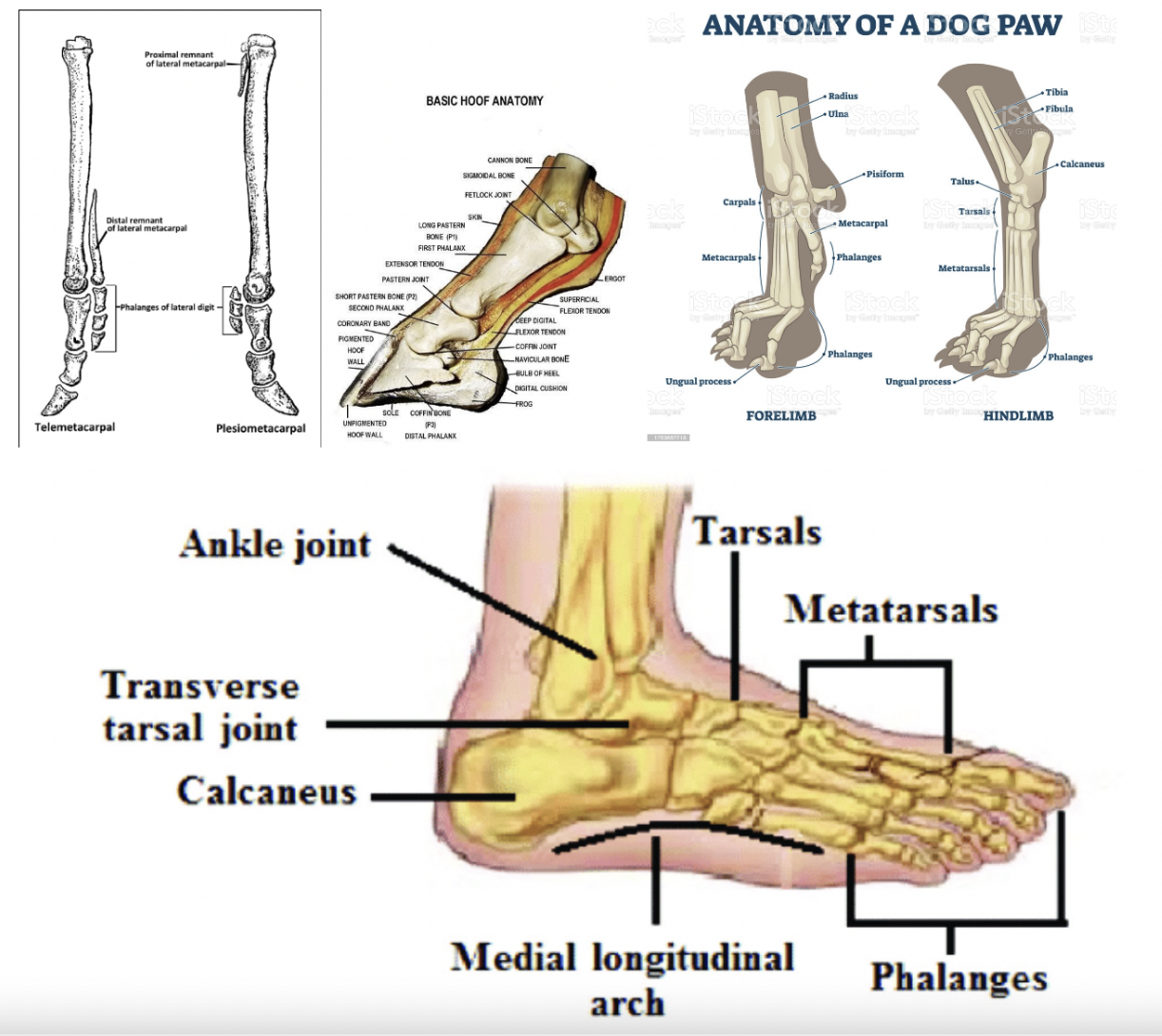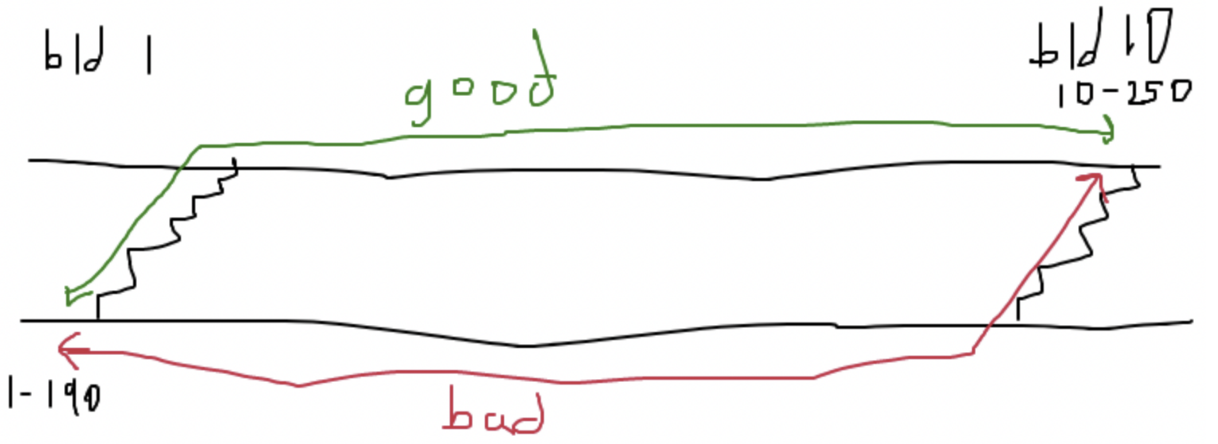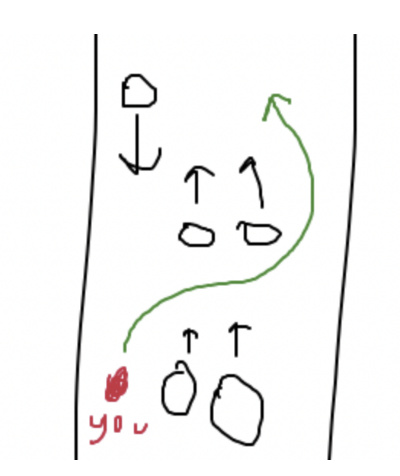
walking mechanics by Vincent H. '23
how to walk faster using Facts and Science
it turns out many people at mit walk really slowly. not in the sense that mit is slower than the rest of the world, but in the sense that you can optimize walking significantly when armed with basic knowledge of anatomy and mechanics, which most mit students possess but have not yet applied to their walking. with that in mind, this post contains some thoughts i’ve gathered about walking faster. (if you’re disabled or injured in ways that impair walking, i’m sorry and i have no idea what it’s like to be you but you can probably ignore this post)
0. disclaimers
any good walking form should be:
- sustainable – if you stumble upon a new Ultra Fast Walking Form that tires you out and makes your joints hurt after a few minutes, you should probably only use it sparingly if at all
- enjoyable – the world is really lovely, and i think walking is one of the best ways to enjoy it. if your fast walking procedure requires lots of brainpower and attention and prevents you from noticing when it’s a really nice day outside then i think you should walk slower
- considerate – you can in principle walk through busy hallways like the infinite very quickly by bulldozing through everyone in your way. i do not recommend it
i should also mention that there are other means for commuting faster that many people use on campus, such as bikes, scooters, and running. alan z ’23 also suggests being taller
i. foot mechanics
i think it’s important to understand how your foot is actually coming in contact with the ground when you take a step. not just for the purposes of walking faster, but also to prevent accidents – i injured my foot last february by repeatedly slamming the soft tissue in the middle of my foot into the ground while running, and that prevented me from walking normally for two weeks. it’s easier to hurt your feet than you might think (that being said, the experience did inspire me to learn a lot more about feet and walking than i otherwise would have, so maybe it was a net positive)
your feet each have 26 bones and a ton of joints and muscles to provide balance and stability. we can’t go into all of them here, and in fact we can’t say for sure why most of these foot structures exist. a statement about why a bone or muscle is convenient for us now is not the same as a statement about why that structure originally evolved, and in general statements of the form “of course humans have x body part to perform y function” suffer from a lot of hindsight bias so i will try to avoid doing so
but what we can say with certainty is that the human foot is much better suited for walking than most animals. you may have noticed that most animals don’t walk nearly as much as humans – there are animals that traverse long distances every day, like certain species of horses and dogs and deer, but they do so almost entirely by running, and this is reflected in their foot structures, which optimize for springiness and emphasize finger / toe structures so that they can land on the ground and take off extremely quickly

by contrast, humans have rather long feet with large heels, and the toes and balls are somewhat separated from the main leg. this is detrimental to running – running on your heels expends more energy than running on your toes and balls, which is why sprinters and marathoners usually don’t use heels much when landing on the ground. (the reason humans are good long-distance runners has more to do with leg structure than foot structure, and with general endurance and being bipedal and efficient sweating for temperature control)
so given that our long feet and heels do not really assist in running, it’s reasonable to expect that they might help with other tasks such as walking, and indeed, this guess mostly checks out. some studies tried to quantify this by making people walk on treadmills while wearing face masks that measure oxygen consumption. they show that walking where you land on your heel first, and then transfer weight to your balls and toes, takes 2/3 as much energy as walking primarily on your balls and 1/2 as much energy as walking primarily on your toes (and ball/toe walking is essentially what most animals do)
the main hypothesis for why landing on your heel helps is that, when you step with your heel and then shift weight to the front of your foot, you are performing more efficient conversion of kinetic energy (from the motion before the landing) into potential energy (as you roll weight towards the front of the foot 01 in my opinion this is more about angular momentum than potential energy because i can’t actually tell where the potential is being stored, but the publications say potential energy so let’s go with that ) and then kinetic energy again as your foot takes off. it’s also probably true that landing on your heels allows major muscles in the rest of your legs and body to relax more, since the heels provide more natural balance
what this means is that, to walk faster, you should pay attention to how you land on your heel and the transitions from heel to ball and ball to toes, and figure out how to make these transitions smoother and faster. most babies learn to walk on their toes first and then learn to use balls and heels later, which means everyone has learned to use the entirety of their feet to varying degrees of effectiveness and some adults still barely use their heels. it’s also true that everyone has slightly different foot dimensions which affect what the best step routine for them is, so i don’t really have specific suggestions here other than to experiment with smoothening each step and to notice what subroutines your steps are actually performing. what i do know for certain is that, after learning about heel to toe movements and becoming explicitly aware of them, my walking form became faster and more relaxed
ii. arm movements
your arms probably swing when you walk. your left arm probably moves forward at roughly the same time as your right leg, and similarly for your right arm and left leg. you probably already know that the reason this occurs is that it helps balance the left and right sides of your body. when you take a step forward with your left foot, your entire body is also performing a slight side-to-side twist about your spine as you rotate from left-behind-right to right-behind-left. swinging the right arm counterbalances this motion by pushing some mass on the right side of your body forward, and this reduces cumulative torque. although arm swinging requires the arm muscles to expend energy, it is more than made up for by the energy conserved from reducing torque; some scientists asked people to try walking without arm swinging and found that it increased net energy expenditure by 12%
i have two main takeaways from this. the first is that you should try not to walk while inhibiting arm motion. a lot of people at mit walk with their hands in their pockets, either because it looks cool or because the boston outdoors are cold for most of the year or for whatever other reason, but this makes it significantly harder to walk quickly. pants pockets are especially bad because, if your hands are in your pants pockets, they are literally getting in the way of your legs moving forward; jacket pockets are somewhat more acceptable but still not great. mit students often also walk while eg. texting on their phones. this is understandable because phones are important and etc, but again, it makes walking significantly more tiring, not to mention that it can be dangerous
the second main takeaway is that arm energy expenditure is cheap. what i mean is this: if you ever have the opportunity to smoothen the motion of your entire body by using slightly more arm energy, it is probably a worthwhile tradeoff. specifically, i’ve noticed that when people walk and allow their arms to swing naturally, they swing through a pretty wide angle and the height difference between their hands at the peaks and troughs of their arcs can be as large as one foot. but in my experience there is actually no need to be swinging your arms so much – after trying a variety of arm-swinging angles, i’ve found that the motion that makes walking most comfortable for me involves swinging my arms half as much as the natural motion. and of course, artificially restricting my swinging requires more arm effort, but the end result feels a lot better
iii. pay attention
by pay attention i mean paying attention to your overall route as well as to what’s immediately in front of you
i’m not going to say much about route planning because it’s mostly obvious. map apps are helpful, straight lines are helpful, and walking through grass allows for lots of shortcuts if you’re okay with doing that. there is only one point i really want to make about route planning, and it’s something that’s been bugging me for two years now:
when people are walking indoors between classes, say, from the first floor of building 1 to the second floor of building 10, they walk from building 1 to building 10 and then go up one flight of stairs. similarly to perform the reverse path, they take the stairs down to the first floor of building 10 and then walk to building 1, and then they wonder why they are having trouble getting to class on time
there is an almost entirely identical alternative path where, to get from the first floor of building 1 to the second floor of building 10, you go up the building 1 stairs and then walk to building 10. for the reverse path, you stay on the second floor while walking from building 10 to building 1, and then go downstairs at the end. this avoids all the traffic of the first-floor infinite and is significantly faster (with a lot less covid exposure too, if you’re concerned about that), and, since most buildings at mit and in the rest of the world have fairly consistent layouts from floor to floor, the route is identical other than the timing of the staircase. but nobody ever takes me seriously when i tell this to them, even when they’re consistently late to class because they keep walking through crowded areas. i’ve even had people tell me that they only know how to get from building 1 to building 10 if they stay on the first floor and they can’t do it via the second floor. it baffles me every time

anyway, the other part of paying attention is seeing what’s in front of you. mostly obvious stuff, like, it is easier to walk around a crowd if you see them early and plan in advance. if you are already walking faster than everyone around you, you can also cut through gaps in people without bothering them eg. maneuvers similar to when you’re passing cars on roads:

of course, this only works if you’re already at, say, 150% the speed of other people (which you can probably achieve fairly easily if you optimize the rest of your walking) and if the gaps are wide enough. and again, i will refer you to the point about being considerate from the disclaimers section
the other crowd scenario that comes up often is when a large group of people is walking together slowly and blocking most of a hallway. in these scenarios you can walk behind them, take a different route, or say excuse me very loudly and hope they make room for you. but all of these solutions are fairly slow and the faster thing to do is to just squeeze through the space between the edge of the group and a wall. usually this requires artificially reducing the width of your body by scrunching your arms and shoulders together, or by angling your body so that you’re essentially walking sideways. and again, the faster your speed is, the easier these kinds of maneuvers become, because you spend less time in transition

iv. stairs
unless you have extremely short or extremely long legs, i’m fairly certain the easiest way to walk up most staircases is two steps at a time. empirically speaking, when i walk up a staircase one step at a time, at the rate of one step per second, i expend significantly more energy than if i walk up the stairs two steps at a time, at the rate of two steps per two seconds, even though the pace is the same. there are many reasons for this – it is easier to continue motion than to initiate it and walking up two stairs at a time halves initiation, on-the-ground foot motions are also halved, and so on, but probably the simplest thing to do is just to examine the total vertical distance your feet are traveling
suppose you’re walking up a flight of 32 stairs, each of which are 4 inches tall. when you take a step, your foot does not actually rise to the height of the new step; it rises above the height of the new step by a significant amount, say, 3 inches, so that you can comfortably land on the new step. (the numbers 32, 4, and 3 are fairly accurate estimates of what walking on real mit staircases is like for me.) what this means is that every time you walk up a 4-inch step, your foot undergoes 6 inches of extra motion, 3 inches on the way up and 3 on the way down. so when you walk up the flight of stairs one at a time, both your feet end up 128 inches above where they originally were, with 192 inches of wasted motion; when you walk up stairs two at a time, there are only 96 inches of wasted motion
of course, the exact distances here depend on the step heights and also their widths. there are very steep and very wide staircases that you should walk up one step at a time. and the reason you can’t apply this same argument to walking up three or four steps at a time is that your legs are probably not long enough to comfortably extend through that many steps’ worth of both height and width
the same is not as true when walking down stairs because you don’t create that much wasted vertical motion when descending, since as you walk down a step your back foot mostly moves forwards rather than upwards to escape the top step. taking two steps at a time on the way down does allow you to walk faster in the sense that it allows you to literally fall down a flight of stairs while remaining on your feet (i recommend keeping an arm on a railing if you want to try this. basically as soon as your foot lands on a step you make an upwards and forwards push off the step so that you spend a majority of your time with both feet in the air while falling downwards), but replacing all your steps with falls results in harsher impacts with the ground that are probably unhealthy for your legs, and it is obviously more prone to accidents and incompatible with crowds
v. miscellaneous
there are some obvious parameters to change that i have not previously mentioned. for instance, varying your stride length — the relationship between stride length and overall pace is not clear to me, in the sense that longer strides don’t really result in me walking faster but do result in more energy expenditure. the fastest walkers i know all only have moderate stride lengths. this seems to vary from person to person though and is worth exploring
another adjustment i find helpful is leaning forward slightly. slightly meaning that my upper body tilts by maybe 5 or 10 degrees when i’m trying to walk quickly. leaning forward keeps the center of mass of your abdomen towards the front of your body, which naturally pushes you to walk faster because you are essentially falling forwards the entire time
it used to also be the case that i was unable to walk quickly when i was particularly sad, and to some extent this is still true. in fact i think this is the case for most people – it’s incredibly hard to get into the optimal walking groove (or to do anything well) when your mind is troubled and fogging up the rest of your existence. i don’t really have a good solution to this other than to try my best to compartmentalize my feelings or clear my mind while walking
if you have any suggestions for fast walking that you think i haven’t covered, i’d love to hear about them in comments :)
- in my opinion this is more about angular momentum than potential energy because i can’t actually tell where the potential is being stored, but the publications say potential energy so let’s go with that back to text ↑